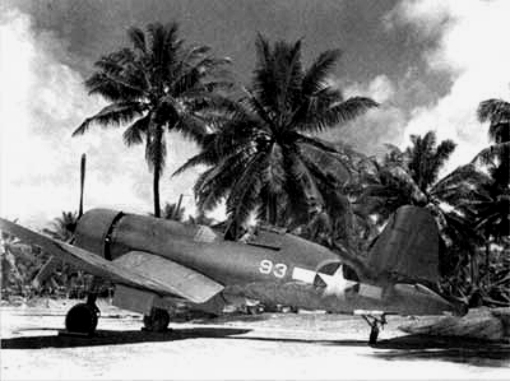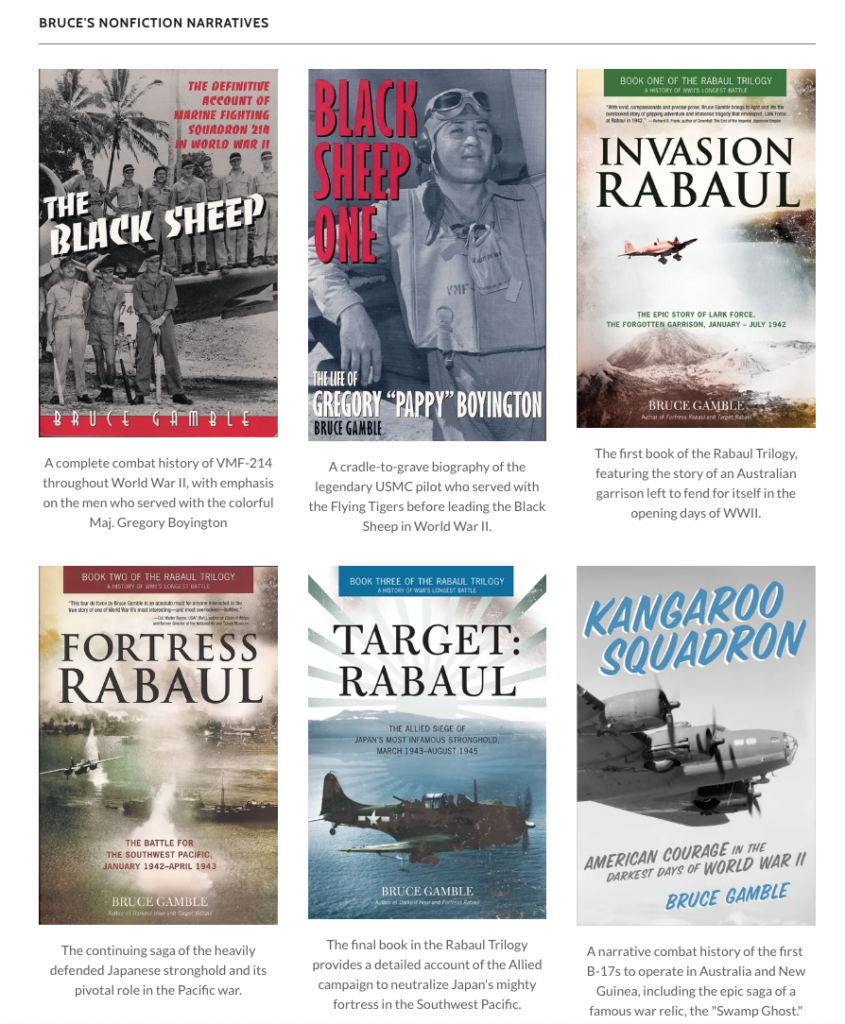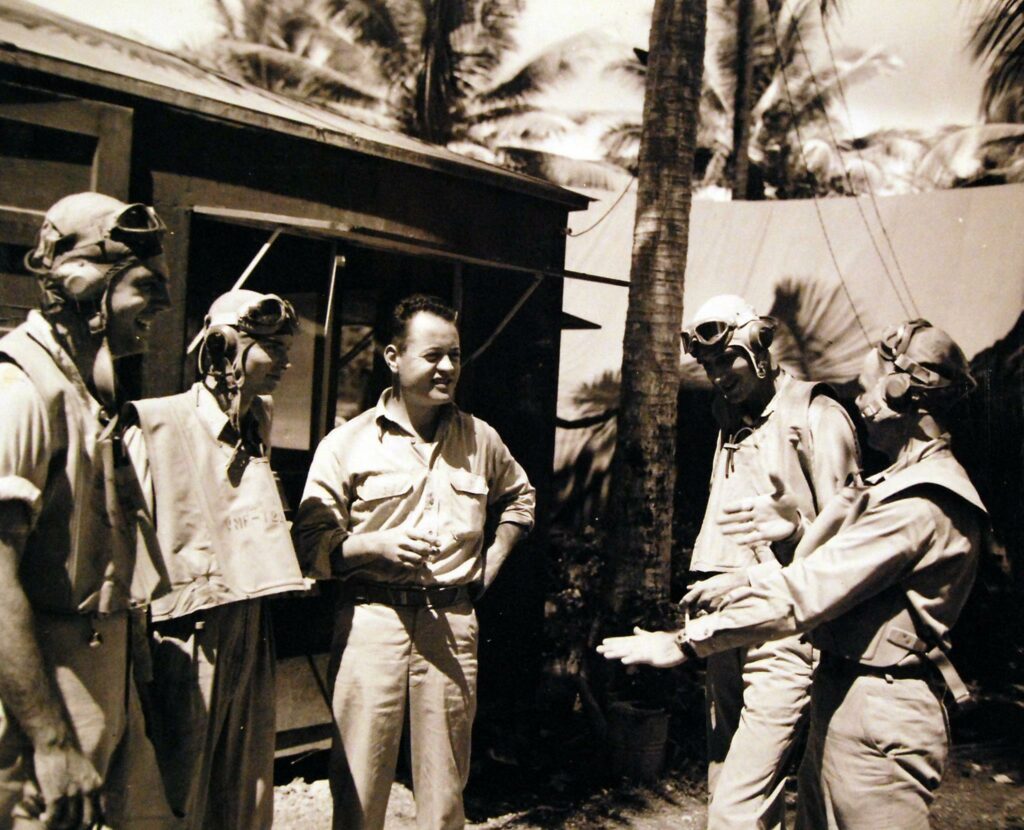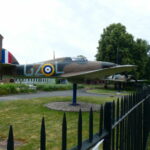The second episode of Black Sheep Chronicles: VMF-214 in World War II is now on YouTube. During the summer Gamble announced a new and exciting series of episodes about the famed Black Sheep Squadron (VMF-214). Gamble published his first book, The Black Sheep, in 1998, a highly readable account that serves to both correct and extend the record of the VMF-241 and its renowned squadron leader Greg “Pappy” Boyington. With a total of four titles now in print, Bruce is recognized as one of the top authors on the air war in the Pacific.
Using rarely-seen video footage and still photographs, author Bruce Gamble has produced Part 2: Corsairs, a 25-minute documentary of the famous squadron’s creation and its first tour of combat. Part 2 of Black Sheep Chronicles covers VMF-214’s second combat tour during the summer of 1943 when they fought intense air battles in the Central Solomons and adopted their first name: “Swashbucklers.” The video shows numerous aspects of the squadron’s combat experiences and daily existence on the fabled island.
Marine Fighter Squadron 214 (VMF-214) was originally commissioned on 1 July 1942, at Ewa Field, on the island of Oahu, in the Hawaiian Island group. Initially called the “Swashbucklers”, they were disbanded following their combat tour and the squadron designation was given to the Marine command on Espiritu Santo. In August 1943, a group of 27 young men under the leadership of Major Gregory “Pappy” Boyington (who was later awarded the Congressional Medal of Honor) were joined together to form the original “Black Sheep” of VMF-214. Major Boyington had just returned from a year’s tour in China as a member of the American Volunteer Group, “The Flying Tigers”. In China, he had downed six enemy planes and became, through experience, one of the originators of American fighter tactics against the Japanese.
The call sign “Black Sheep” was chosen by the squadron to commemorate the unusual way in which the squadron had been formed. The pilots ranged from experienced combat veterans, with several air-to-air victories to their credit, to new replacement pilots from the United States. Major Boyington and Major Stan Bailey were permitted to form the unassigned pilots into a squadron, with the understanding that they would have less than four weeks to have them fully trained and ready for combat. They were very successful.
Previous Episodes
https://vintageaviationnews.com/warbird-articles/introducing-the-black-sheep-chronicles.html
https://vintageaviationnews.com/warbird-articles/black-sheep-chronicles-part-1-wildcat-days.html


























